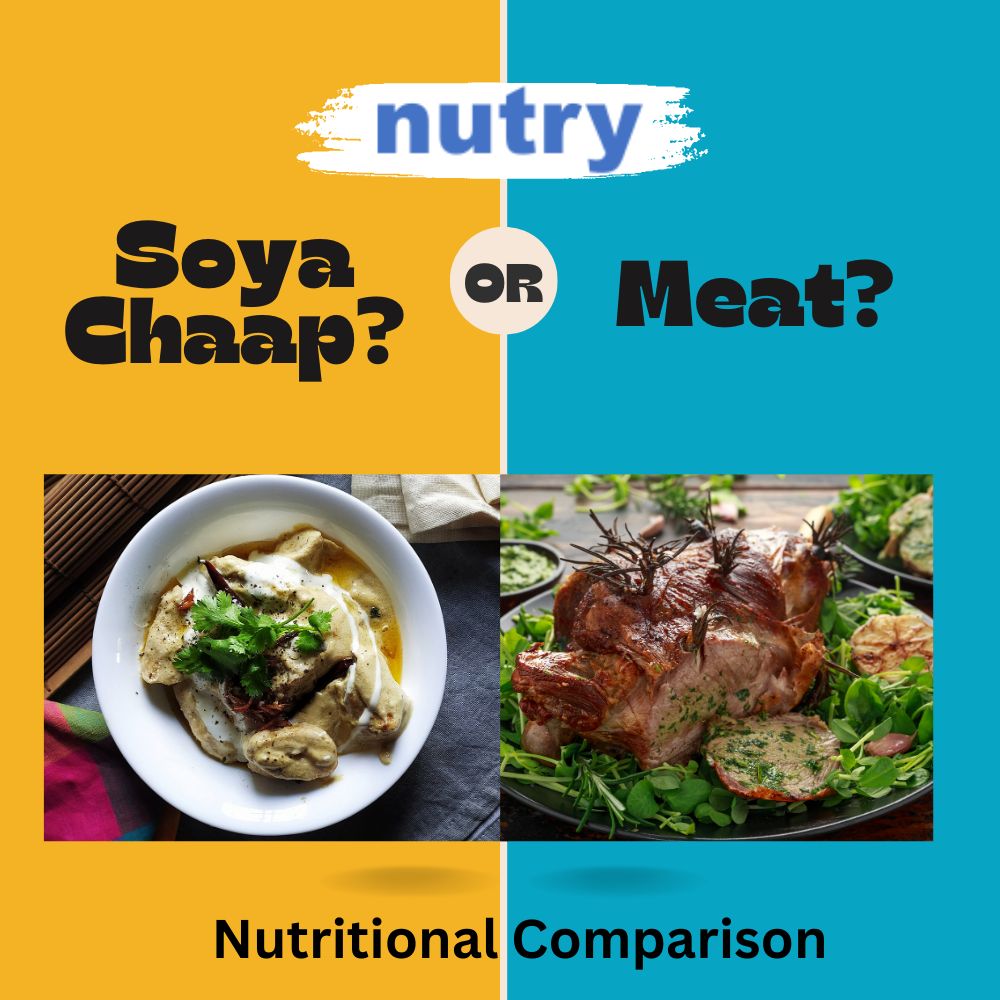
In the world of protein-rich foods, the debate between
plant-based options and animal-derived sources is an on-going conversation. One
such comparison that often arises is between soya chaap, a popular vegetarian
alternative, and meat. Both offer unique flavors, textures, and nutritional
profiles. Let's delve into a comprehensive nutritional comparison and a
friendly cooking showdown between these two contenders.
Soya Chaap: A Plant-Based Powerhouse
Nutritional Benefits
Soya chaap is made from soy protein, a complete plant-based
protein that provides all essential amino acids. It's also a good source of
dietary fiber, which supports digestive health and may aid in managing
cholesterol levels.
Heart Health
Soya chaap is naturally low in saturated fat, making it a
heart-healthy choice. Its inclusion in a balanced diet can contribute to
reduced cholesterol levels and cardiovascular well-being.
Rich in Phytonutrients
Soy contains phytonutrients called isoflavones, which have
been linked to various health benefits, including reducing the risk of certain
cancers and supporting bone health.
Meat: An Animal Protein Powerhouse
Nutritional Benefits
Meat, depending on the type and cut, provides high-quality
complete protein, essential vitamins, and minerals such as iron, zinc, and B
vitamins. These nutrients play crucial roles in energy production, immune
function, and muscle growth.
Animal-derived iron in meat is heme iron, which is more
easily absorbed by the body compared to non-heme iron found in plant sources.
This makes meat a valuable source of iron for preventing anemia.
Amino Acid Profile
Meat provides all essential amino acids in proportions that
align well with human protein needs, making it an excellent choice for
supporting muscle maintenance and growth.
The Cooking Showdown: Soya Chaap vs. Meat
Versatility in Cooking
Both soya chaap and meat offer an array of cooking
possibilities. From grilling and sautéing to marinating and roasting, these
ingredients can be transformed into a variety of mouthwatering dishes.
Texture and Flavor
Soya chaap, due to its soy protein base, can mimic the
texture of meat in certain dishes, making it a popular choice among vegetarians
and vegans. Meat, on the other hand, offers its distinctive flavors and
textures that are often associated with traditional and cultural cuisines.
Nutritional Cooking Tips
- When cooking meat, opt for lean cuts and avoid excessive
use of unhealthy cooking oils to keep saturated fat intake in check.
- For soya chaap, consider marinating it to enhance flavor
and using minimal oil while cooking to maintain its heart-healthy profile.
Whether you lean towards soya chaap or meat, making informed
choices aligns with your nutritional goals and preferences. A balanced diet
that includes a variety of protein sources, along with a rainbow of fruits and
vegetables, can provide a range of nutrients that contribute to overall health.
In the soya chaap vs. meat showdown, both contenders bring
unique qualities to the table. Soya chaap offers a plant-based, heart-healthy
protein source with phytonutrients, while meat provides a complete protein
profile along with easily absorbable iron. Whichever you choose, remember that
variety is key to a well-rounded and nutritious diet. So go ahead, explore the
culinary possibilities of both soya chaap and meat, and savor the flavors they
have to offer!
